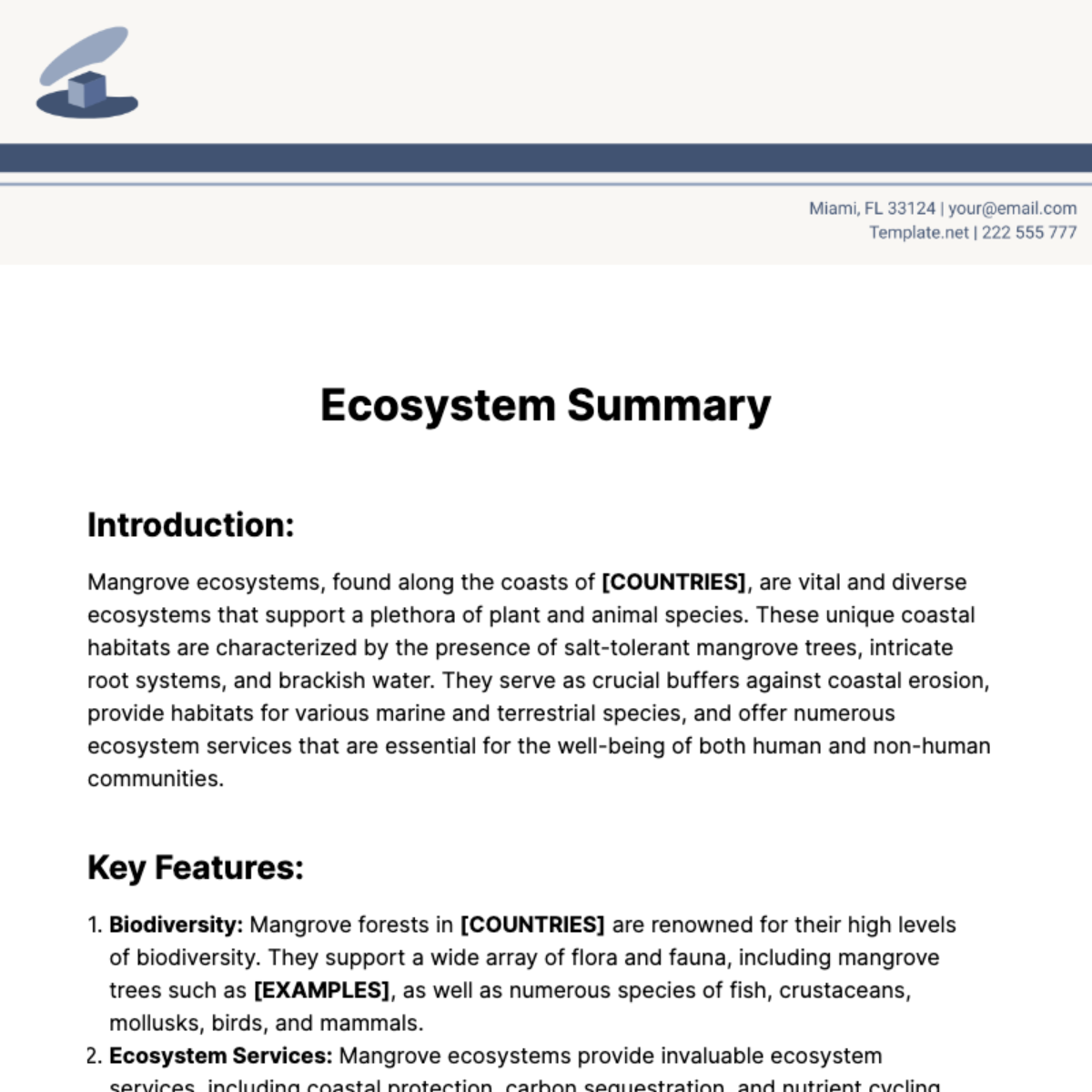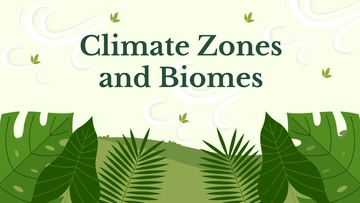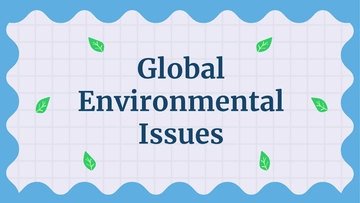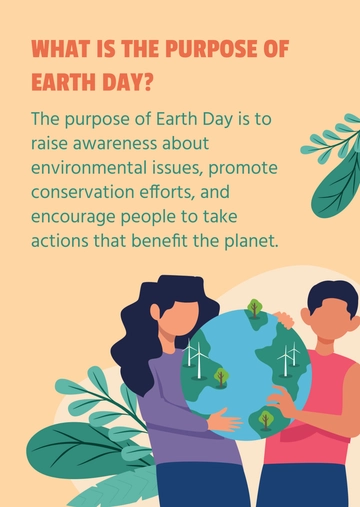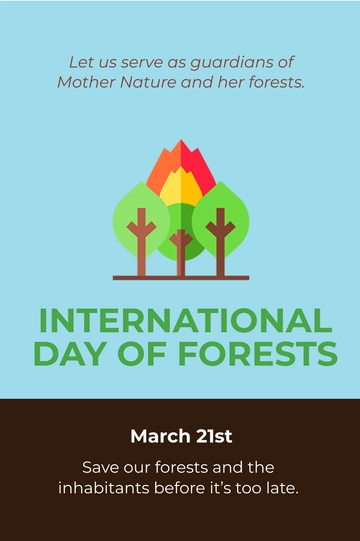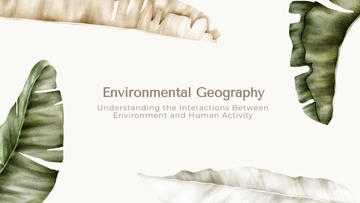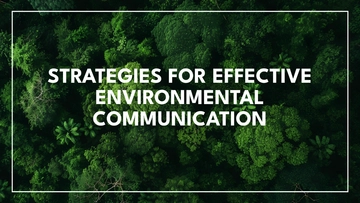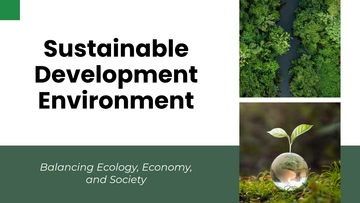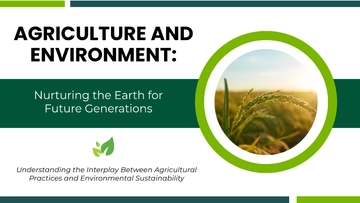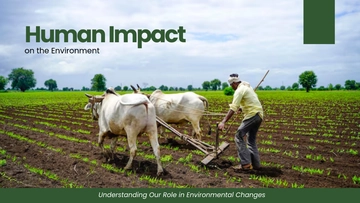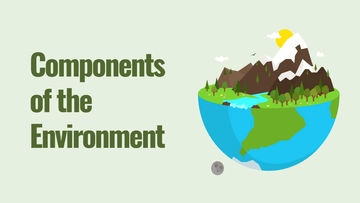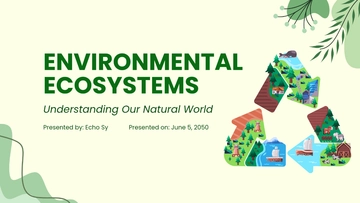Ecosystem Summary
Introduction:
Mangrove ecosystems, found along the coasts of [COUNTRIES], are vital and diverse ecosystems that support a plethora of plant and animal species. These unique coastal habitats are characterized by the presence of salt-tolerant mangrove trees, intricate root systems, and brackish water. They serve as crucial buffers against coastal erosion, provide habitats for various marine and terrestrial species, and offer numerous ecosystem services that are essential for the well-being of both human and non-human communities.
Key Features:
Biodiversity: Mangrove forests in [COUNTRIES] are renowned for their high levels of biodiversity. They support a wide array of flora and fauna, including mangrove trees such as [EXAMPLES], as well as numerous species of fish, crustaceans, mollusks, birds, and mammals.
Ecosystem Services: Mangrove ecosystems provide invaluable ecosystem services, including coastal protection, carbon sequestration, and nutrient cycling. They act as natural barriers against storms and tsunamis, help mitigate climate change by storing carbon in their biomass and sediments, and play a vital role in nutrient recycling and water filtration.
Human Dependence: Local communities rely heavily on mangrove ecosystems for their livelihoods. These ecosystems support fisheries, aquaculture, and tourism industries, providing food security and income opportunities for [ESTIMATED NUMBER] of people across [COUNTRIES].
Threats:
Despite their ecological and socio-economic significance, mangrove ecosystems in [COUNTRIES] face numerous threats, including:
Deforestation: Conversion of mangrove forests for aquaculture, agriculture, urban development, and infrastructure projects has resulted in significant loss and degradation of these ecosystems.
Pollution: Pollution from industrial effluents, agricultural runoff, and solid waste poses a serious threat to mangrove ecosystems, leading to water contamination and habitat degradation.
Climate Change: Rising sea levels, increased temperatures, and extreme weather events associated with climate change are exacerbating the vulnerability of mangrove ecosystems, leading to habitat loss and ecosystem degradation.
Conservation Efforts:
Efforts to conserve and restore mangrove ecosystems in [COUNTRIES] are underway, driven by collaboration between [STAKEHOLDERS]. Key conservation strategies include:
Protected Areas: Establishment and management of protected areas, such as marine parks and reserves, to safeguard critical mangrove habitats and biodiversity hotspots.
Community-based Conservation: Involvement of local communities in conservation initiatives through sustainable resource management practices, alternative livelihoods, and capacity building programs.
Policy Interventions: Implementation of policies and regulations to regulate land use practices, promote sustainable development, and mitigate the impacts of climate change on mangrove ecosystems.
Conclusion:
Mangrove ecosystems are invaluable natural assets that play a crucial role in supporting biodiversity, providing ecosystem services, and sustaining the livelihoods of [ESTIMATED NUMBER] of people in [COUNTRIES]. However, they face numerous threats that require urgent action and concerted efforts to conserve and restore these vital habitats for future generations. Through collaborative conservation efforts and effective management strategies, we can ensure the resilience and sustainability of mangrove ecosystems for the benefit of both nature and society.
Summarized By: [YOUR NAME]
Summary Templates @ Template.net
